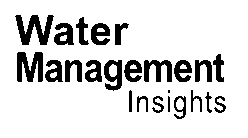In an era where sustainability and innovation are paramount, a groundbreaking dataset is set to revolutionize how we manage wastewater and stormwater. Published recently, this comprehensive knowledge base focuses on Nature-Based Solutions (NBS), offering a treasure trove of information that could reshape the water, sanitation, and drainage industry.
At the heart of this initiative is Josep Pueyo-Ros, a researcher from the Catalan Institute for Water Research (ICRA-CERCA) and the University of Girona, Spain. Pueyo-Ros and his team have meticulously compiled a catalogue of NBS, detailing their variables, ecosystem services, and operational constraints. This isn’t just a static collection of data; it’s a dynamic, evolving resource that invites contributions from users worldwide.
The dataset includes a wealth of information, from the types of water these solutions can manage to the specific pollutants they can treat. “We’ve included everything from biological oxygen demand to pathogens like Escherichia Coli and Helminth eggs,” Pueyo-Ros explains. “This level of detail is crucial for anyone looking to implement these solutions on a commercial scale.”
But what sets this dataset apart is its potential impact on the energy sector. As industries strive to reduce their carbon footprint, NBS offer a sustainable alternative to traditional treatment methods. By harnessing natural processes, these solutions can significantly lower energy consumption and operational costs. “The energy sector is always looking for ways to innovate and reduce costs,” Pueyo-Ros notes. “NBS provide a unique opportunity to do just that, while also promoting environmental sustainability.”
The dataset also includes a comprehensive list of scientific publications, providing a solid foundation for further research and development. With 513 entries and counting, it’s a dynamic reference point for anyone interested in the field. “We want this dataset to be a living, breathing resource,” Pueyo-Ros says. “That’s why we’ve made it open to contributions from the global community.”
Accessing this wealth of information is straightforward. Users can interact with the data through a REST API or download it from a static repository. This ease of access is designed to encourage widespread use and application, from modelling surface requirements for different NBS to serving as a sandbox for data science students.
Published in Data in Brief, which translates to English as “Brief Data,” this dataset is more than just a collection of numbers and variables. It’s a call to action, a challenge to the industry to embrace sustainability and innovation. As Pueyo-Ros puts it, “The future of wastewater and stormwater management lies in nature. This dataset is our roadmap to that future.”
The implications of this research are vast. It could lead to the development of more efficient, cost-effective treatment systems, reducing the environmental impact of the energy sector. It could inspire a new generation of data scientists and engineers, eager to explore the potential of NBS. And it could pave the way for a more sustainable, resilient future.
As we stand on the brink of a new era in water management, this dataset serves as a beacon, guiding us towards a future where nature and technology work hand in hand. The stage is set, the data is ready. The question is, are we ready to embrace the change?
